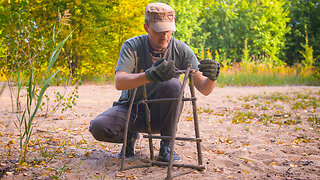Premium Only Content

Increased Risk of Dengue Virus Infections in the United States
A Silent Storm Looms
Imagine a world where a single mosquito bite could lead to a severe, potentially life-threatening illness. As the summer of 2024 unfolds, this scenario is becoming a reality for many in the United States. The Centers for Disease Control and Prevention (CDC) has issued a health advisory, warning of an unprecedented surge in dengue virus (DENV) infections. With global incidence at an all-time high and the Americas reporting record-breaking case numbers, the threat is closer to home than ever before.
## The Global Surge: A Record-Breaking Year for Dengue
### An Alarming Trend
In 2024, the world has witnessed the highest global incidence of dengue on record. Countries in the Americas have reported over 9.7 million dengue cases from January to June alone, doubling the total number of cases from 2023. This surge is not just a statistic; it's a clear indicator of the evolving challenge posed by this mosquito-borne disease.
### Regional Impact
In the United States, Puerto Rico has declared a public health emergency, with 1,498 cases reported in the first half of 2024. Additionally, 745 cases have been identified among U.S. travelers returning from areas with active dengue transmission. This sharp increase in cases highlights the need for heightened awareness and proactive measures to combat the spread of the virus.
## Understanding Dengue: The Basics
### What is Dengue?
Dengue is the most common arboviral disease globally, caused by four closely related viruses: DENV-1, DENV-2, DENV-3, and DENV-4. These viruses are transmitted primarily through the bites of infected Aedes mosquitoes. A single infection provides lifelong immunity against the specific virus but only temporary protection against the others, increasing the risk of severe illness upon subsequent infections.
### Symptoms and Severity
Approximately one in four dengue infections are symptomatic, ranging from mild to severe. Common symptoms include fever, nausea, vomiting, rash, muscle and joint pain, and low white blood cell counts. Severe cases can lead to life-threatening complications such as severe bleeding, shock, or organ impairment, particularly in vulnerable populations like infants, pregnant women, and the elderly.
## The U.S. Perspective: Rising Cases and Local Transmission
### Historical Context
Dengue has been a nationally notifiable disease in the United States for years, with sporadic local transmission reported in Florida, Hawaii, and Texas. Recently, confirmed cases have also emerged in Arizona and California. The increasing number of travel-associated and locally acquired cases underscores the growing threat of dengue within U.S. borders.
### The Role of Climate Change
Climate change plays a significant role in the spread of dengue. Rising temperatures expand the habitats of Aedes mosquitoes, facilitating faster viral replication and increased mosquito survival rates. These changes contribute to higher transmission rates, particularly during warmer and wetter months, aligning with peak travel seasons.
## The CDC's Response: Strategies and Recommendations
### Emergency Response Activation
In April 2024, the CDC launched an emergency response program to address the escalating dengue cases. This initiative includes expanding laboratory testing capacity, strengthening surveillance systems, and disseminating prevention strategies to healthcare providers and the public.
### Educating Healthcare Providers
Healthcare providers are urged to maintain a high suspicion for dengue among patients with fever and recent travel to areas with ongoing transmission. Prompt diagnosis and reporting are crucial for effective outbreak management. The CDC recommends ordering specific diagnostic tests, such as RT-PCR and IgM antibody tests, to confirm dengue infections.
### Public Health Measures
Public health authorities are advised to investigate dengue cases rigorously and ensure timely reporting to the CDC. Educating the public on mosquito bite prevention and control measures is also a priority. Simple actions, such as using EPA-approved repellents, wearing protective clothing, and eliminating standing water around homes, can significantly reduce the risk of mosquito bites.
## Prevention and Preparedness: What You Can Do
### Personal Protection
Preventing mosquito bites is the first line of defense against dengue. When traveling to areas with frequent dengue transmission, use repellents, wear long-sleeved clothing, and stay in air-conditioned or well-screened accommodations. These measures can help minimize exposure to infected mosquitoes.
### Community Involvement
Communities play a vital role in dengue prevention. Regularly inspect and eliminate potential mosquito breeding sites, such as standing water in containers, gutters, and discarded tires. Public awareness campaigns can educate residents on the importance of mosquito control and personal protection measures.
### Seeking Medical Attention
If you experience dengue-like symptoms after traveling to an area with active transmission, seek medical care promptly. Early diagnosis and appropriate management are crucial for preventing severe complications. Healthcare providers should follow CDC and WHO guidelines for fluid management and monitor patients closely during the critical phase of the illness.
Navigating the Dengue Threat
The increased risk of dengue virus infections in the United States is a pressing public health concern. As global incidence reaches unprecedented levels, the need for vigilance, education, and proactive measures has never been greater. By understanding the nature of dengue, recognizing the symptoms, and implementing effective prevention strategies, we can mitigate the impact of this growing threat.
Thank you for reading this important update on the rising risk of dengue. If you found this article informative, please like, share, and subscribe to our channel for more updates on public health and safety. Your engagement helps us reach a wider audience and foster a more informed community. Leave your thoughts and questions in the comments below, and let's work together to stay ahead of this evolving challenge.
-
 53:59
53:59
Tactical Advisor
4 hours agoThe Vault Room Podcast 009 | Everyone Getting $5000?!
23.9K5 -
 2:04:44
2:04:44
TheAlecLaceShow
15 hours agoLive at CPAC | Interviews with Dean Cain, Rep. Comer and more! | The Alec Lace Show
25.4K1 -
 LIVE
LIVE
Major League Fishing
2 days agoLIVE Tackle Warehouse Invitationals, Stop 1, Day 2
237 watching -
 LIVE
LIVE
I_Came_With_Fire_Podcast
11 hours agoNOC Spy: CIA uses SATANIC RITUAL ABUSE to make SLEEPER Cells
581 watching -
 28:42
28:42
CatfishedOnline
1 day ago $1.40 earnedWoman Insists Morgan Wallen Relationship Isn't a Romance Scam!
19.1K -
 16:25
16:25
TSPLY
1 day agoNew CNN / MSNBC Meltdown Moments Of Getting Mad At Donald Trump In February
24.5K16 -
 8:33
8:33
scoutthedoggie
5 hours agoAirsoft War Games Scotland
28.3K4 -
 4:56
4:56
Kirill MultitoolOfficial
1 day ago $2.70 earnedSurvival TIPS and usefull bushcraft DIY in the wild
43.9K3 -
 27:25
27:25
ArturRehi
1 day agoThis is How Dictatorships are Formed
23.7K5 -
 59:35
59:35
AlaskanBallistics
18 hours ago $0.63 earnedI Love this Gun Episode # 11
16.7K1